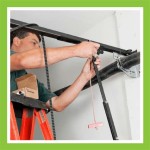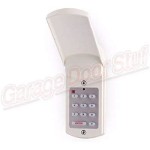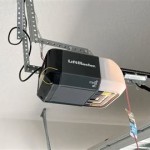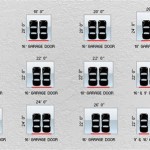```html
How To Get Rid Of A Mouse In Your Garage
A mouse infestation in a garage presents a common problem for homeowners. Garages, often less frequently visited than other parts of the house, can become attractive havens for mice due to their potential for undisturbed nesting sites, available food sources (such as spilled birdseed, pet food, or improperly stored garbage), and access to the outdoors.
Addressing a mouse problem requires a multi-faceted approach, encompassing preventive measures, identification of entry points, and effective removal strategies. Ignoring a mouse infestation can lead to property damage, contamination of stored items, and potential health risks due to the transmission of diseases.
Identify the Extent of the Infestation and Entry Points
The first step in eradicating a mouse problem involves assessing the severity of the infestation. Look for signs of mouse activity such as droppings, gnaw marks on stored items or structural elements, nesting materials (shredded paper, fabric, or insulation), and a musty odor. Mouse droppings are typically small, dark, and pellet-shaped. Gnaw marks often appear as small, irregular holes or scratches on wood, plastic, or cardboard.
Locating entry points is crucial to preventing future infestations. Mice can squeeze through surprisingly small openings, sometimes as small as a dime. Common entry points in garages include gaps around doors and windows, cracks in the foundation, holes in the siding, and openings around pipes or utility lines. Pay close attention to areas where different materials meet, such as where the garage door frame meets the concrete floor.
A thorough inspection should include checking behind and under storage containers, inside cabinets, and along walls. Use a flashlight to illuminate dark corners and crevices. Note the location of any signs of mouse activity and potential entry points. This information will be essential when implementing control measures.
It is also important to consider potential sources of food and water within the garage. Even small spills of birdseed, pet food, or sugar can attract mice. Leaky pipes or condensation can provide a water source. Eliminating these attractants will make the garage less appealing to mice.
Implement Effective Mouse Removal Strategies
Several methods are available for removing mice from a garage, each with its own advantages and disadvantages. These include trapping, baiting, and professional pest control services.
Trapping is a popular and often effective method, particularly for smaller infestations. Snap traps are a common choice, and they should be baited with substances like peanut butter, cheese, or chocolate. Place traps along walls, behind objects, and in areas where mouse activity has been observed. Check traps regularly and dispose of dead mice properly, wearing gloves to avoid contact with pathogens.
Multiple traps should be used even if only one or two mice are suspected. Mice are often wary of new objects in their environment, so pre-baiting traps for a few days without setting them can increase their effectiveness. Once the mice become accustomed to feeding from the traps, they can be set.
Baiting involves using rodenticides to kill mice. This method can be effective for larger infestations, but it also carries risks. Rodenticides are toxic to humans and pets, so they must be used with extreme caution. Bait stations should be placed in areas inaccessible to children and animals. The bait should be securely contained within the station to prevent accidental exposure.
Several types of rodenticides are available, each with a different mode of action. Anticoagulant rodenticides work by preventing blood clotting, while other types affect the nervous system. It is important to follow the manufacturer's instructions carefully when using rodenticides. Monitor bait stations regularly and replenish bait as needed. Remove and dispose of any dead mice promptly.
Professional pest control services offer a comprehensive approach to mouse removal. Pest control professionals have the knowledge, experience, and equipment to effectively eliminate mouse infestations and prevent future problems. They can identify entry points, implement appropriate control measures, and provide advice on preventive strategies. Using a professional ensures the task is done efficiently and safely.
When selecting a pest control service, it is important to choose a reputable company with licensed and trained technicians. Request references and read online reviews to assess the company's reputation. Obtain a written estimate outlining the scope of work, treatment methods, and cost. Discuss any concerns about the use of pesticides and ask about alternative control methods.
Implement Preventative Measures to Avoid Future Infestations
Once the existing mouse infestation has been addressed, it is essential to implement preventative measures to avoid future problems. This includes sealing entry points, eliminating food and water sources, and maintaining a clean and clutter-free environment.
Seal any cracks or holes in the foundation, walls, or siding with caulk, steel wool, or expanding foam sealant. Install weather stripping around doors and windows to create a tight seal. Cover any large openings with wire mesh. Consider installing door sweeps to prevent mice from entering under garage doors.
Eliminate potential food and water sources by storing food in tightly sealed containers, cleaning up spills promptly, and keeping garbage cans covered. Store birdseed, pet food, and other potential attractants in airtight containers. Repair any leaky pipes or faucets.
Reduce clutter in the garage to eliminate potential nesting sites. Store items off the floor on shelves or in plastic bins. Remove cardboard boxes, newspapers, and other materials that mice can use for nesting. Regularly sweep or vacuum the garage floor to remove crumbs and debris.
Consider using natural repellents to deter mice. Peppermint oil, mothballs, and dryer sheets are often cited as effective repellents. Place these items in areas where mice are likely to enter or nest. However, the effectiveness of natural repellents can vary, and they may not be sufficient to control a serious infestation.
Regularly inspect the garage for signs of mouse activity. Early detection is key to preventing a minor problem from becoming a major infestation. If signs of mouse activity are observed, implement control measures promptly.
Maintaining a clean and well-maintained garage is essential for preventing mouse infestations. By sealing entry points, eliminating food and water sources, and reducing clutter, homeowners can create an environment that is less attractive to mice.
It is also worth considering the surrounding environment. Overgrown vegetation near the garage can provide cover and nesting sites for mice. Trimming vegetation back and maintaining a clear zone around the garage can help to reduce the risk of infestation.
In some cases, a combination of trapping, baiting, and preventative measures may be necessary to effectively control a mouse infestation. It is important to monitor the situation closely and adjust the control strategy as needed.
Remember that persistent mouse problems may require professional assistance. A pest control professional can identify the root cause of the infestation and develop a customized control plan.
```
How To Get Rid Of Mice In Your Garage Keep Them Out

How To Get Rid Of Mice In The Garage Danley S Garages

How To Get Rid Of Mice In Your Garage Keep Them Out

How To Keep Rats Mice Out Of Your Garage

How To Keep Mice Out Of Your Garage Or Shed

How To Get Rid Of Mice In Your Garage

How To Get Rid Of Mice Best Methods Prevention

How To Get Mice Out Of The Garage

How To Remove Mice From Your Garage

How To Get Rid Hotsell Of Mice In Garage








